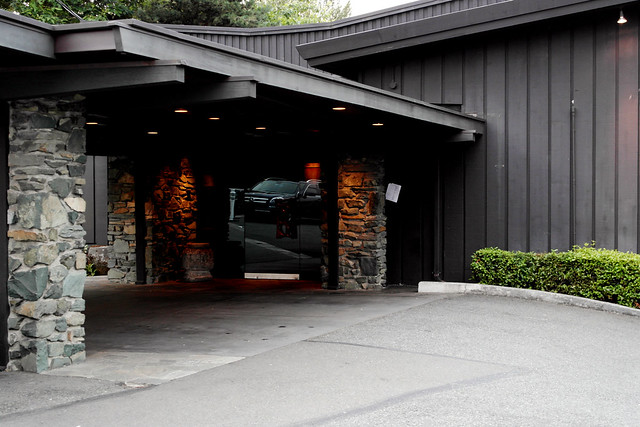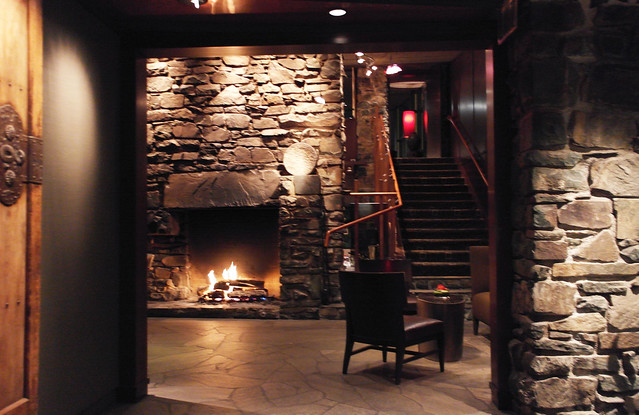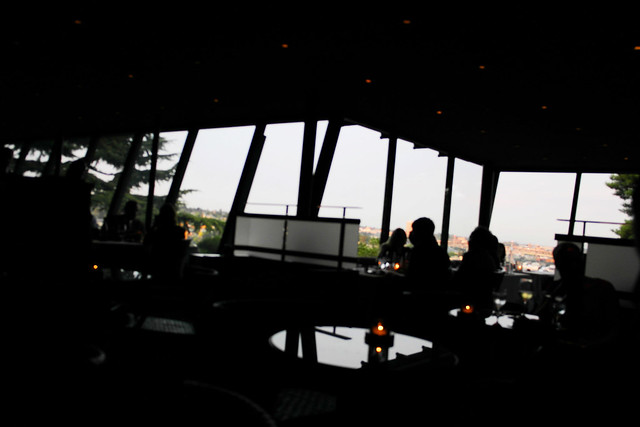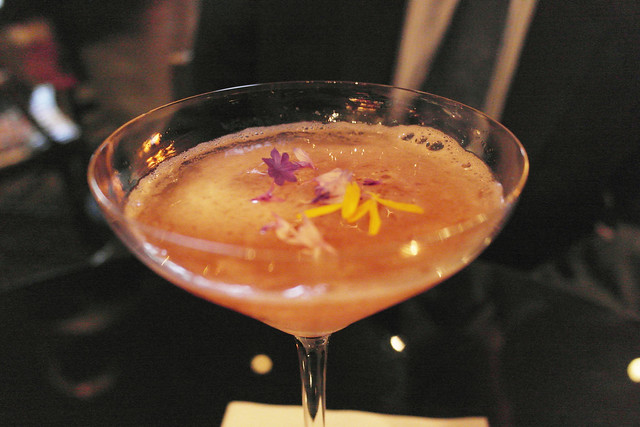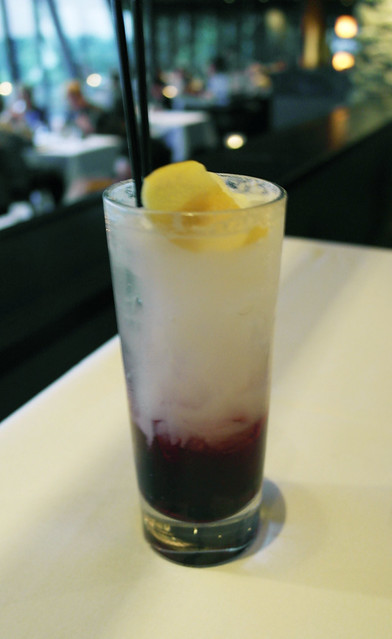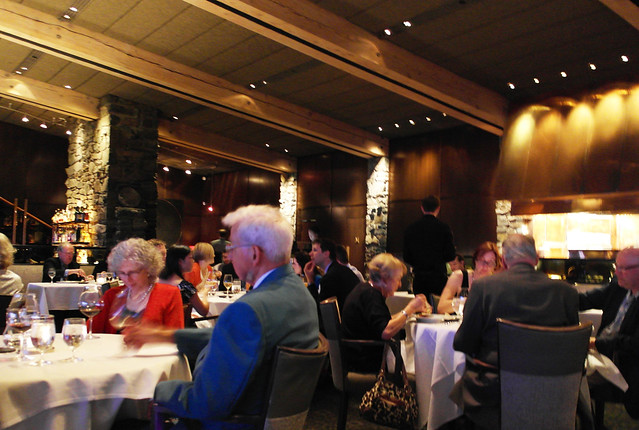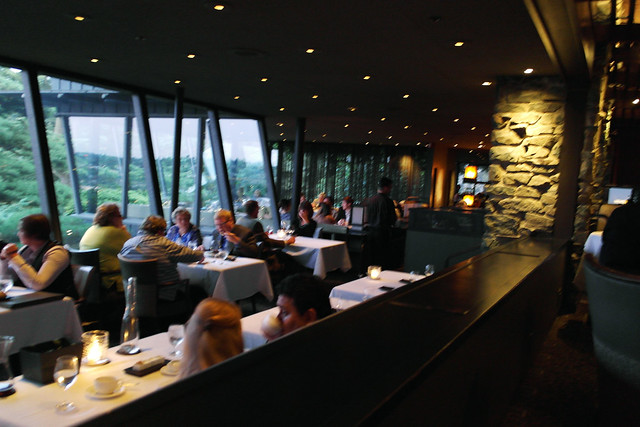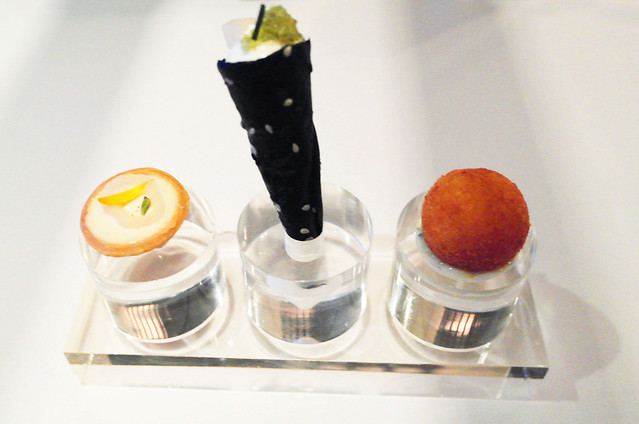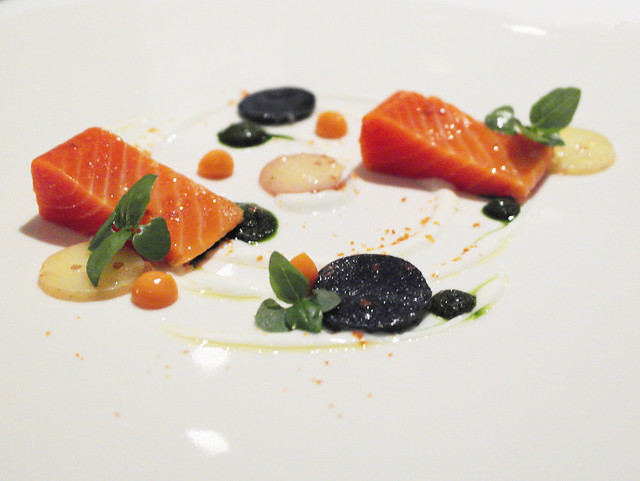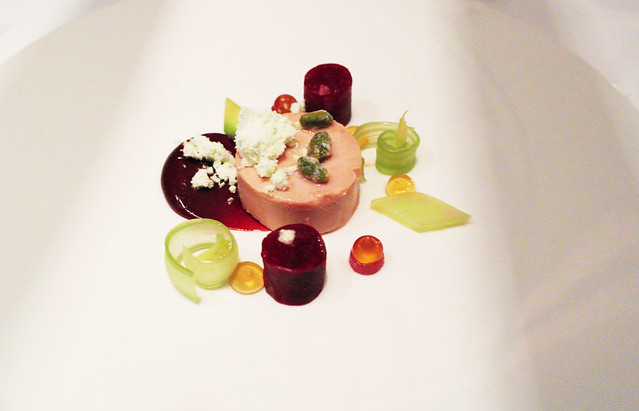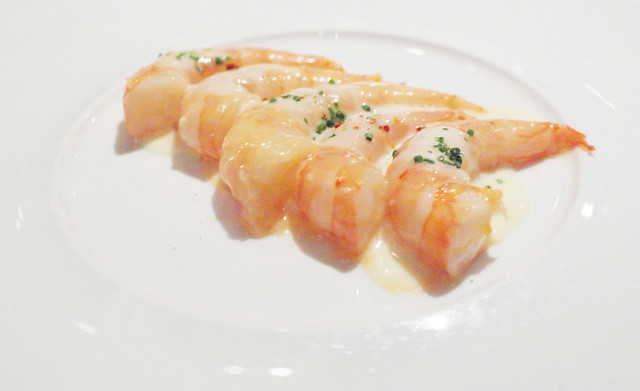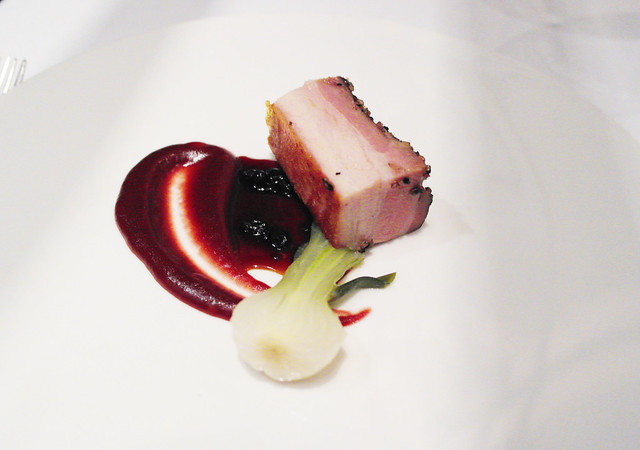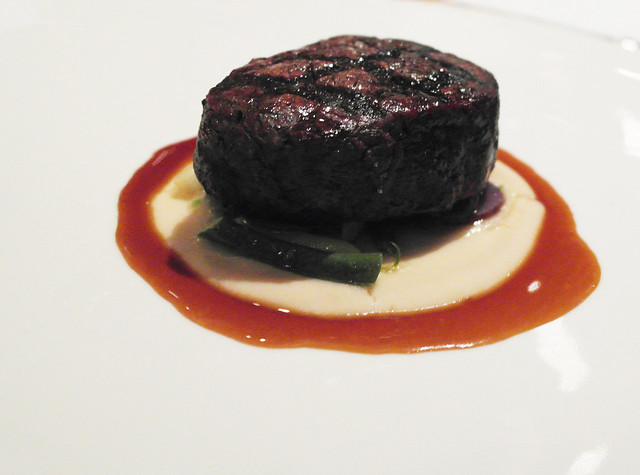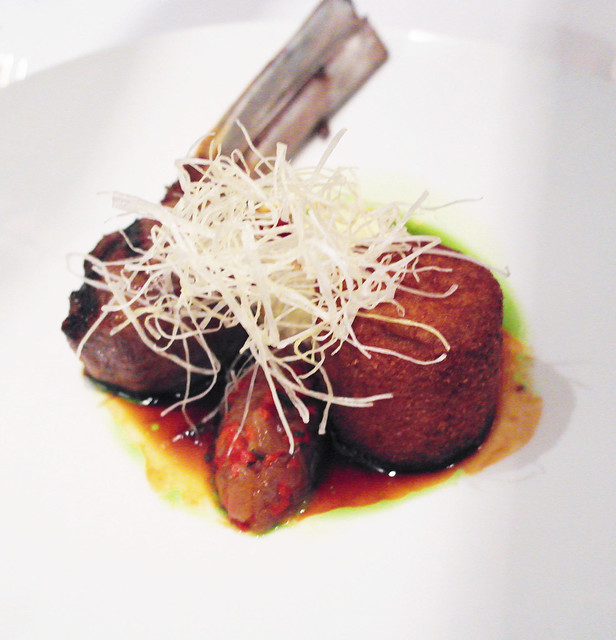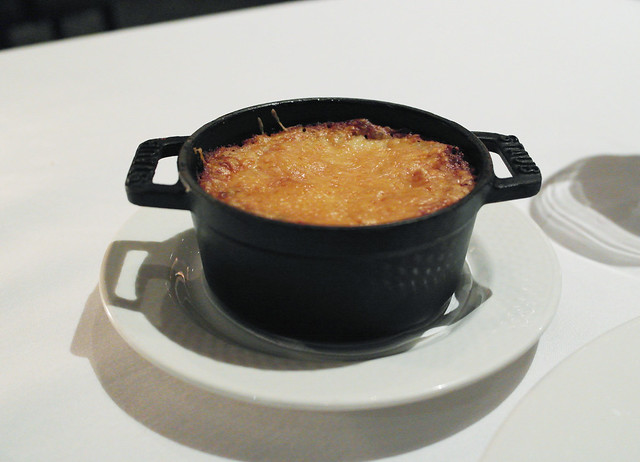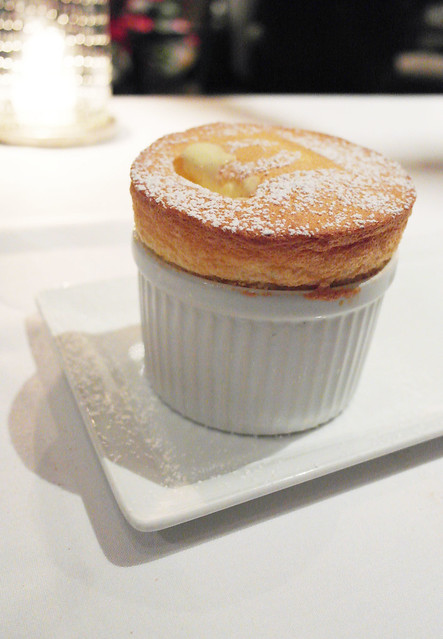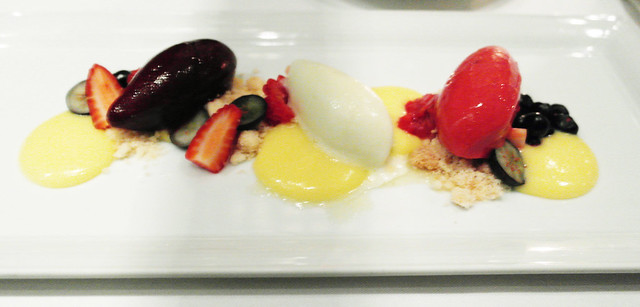I became a member of MoMA earlier this year so I could attend the member previews of the Magritte exhibit back in September (a week before it was on view to the public). Just when I thought I had felt all the admiration I could for the artist, I fell deeper in love with Magritte's works. It shouldn't be a surprise that when I saw the coverage in ARTnews on the first iteration of this class last week, I made sure to sign up for the second (last) class/dinner. The added dimension of food to this already surreal visual experience had me really in for a ride ahead.
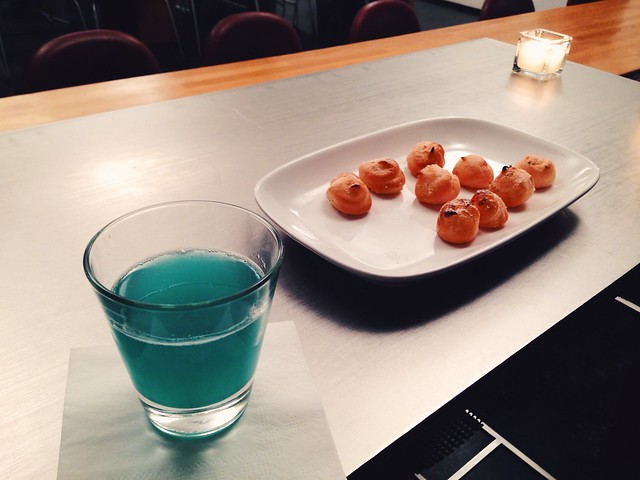
Upon arriving, we were served a cocktail (with "prosecco tinted with sapphire-colored curaçao and mixed with pineapple and lemon juice") called Tattered Skies, eponymous to the painting from which it is inspired (see next image). Alongside the cocktail were gougères -- warm cheese puffs with a rosy hue. Oh man, the cocktail was incredibly delicious, satiating, and refreshing all at once. Damn was that deep tint of blue gorgeous! And don't even get me started on the gougères. Not only were they warm and soft, they melted right onto your palate like buttery pillows of heaven. It did not help that the service team kept these coming, and I probably had more than I care to admit (okay, it was five or so of them :P).
Here is the painting (on view at the exhibition) from which the hors d'oeuvres and cocktails were derived. Crazy at how uncanny Chef Bound and her team really nailed it with just the first bites!
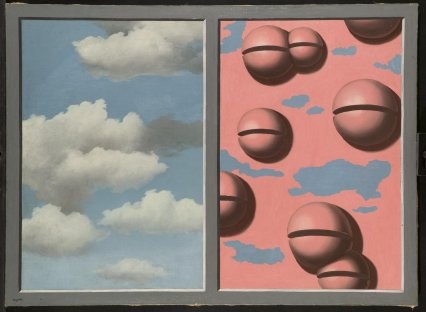
René Magritte
Grelots roses, ciels en lambeaux (Pink Bells, Tattered Skies)
Paris, 1930
Museo Nacional Centro de Arte Reina Sofía: Madrid, Spain
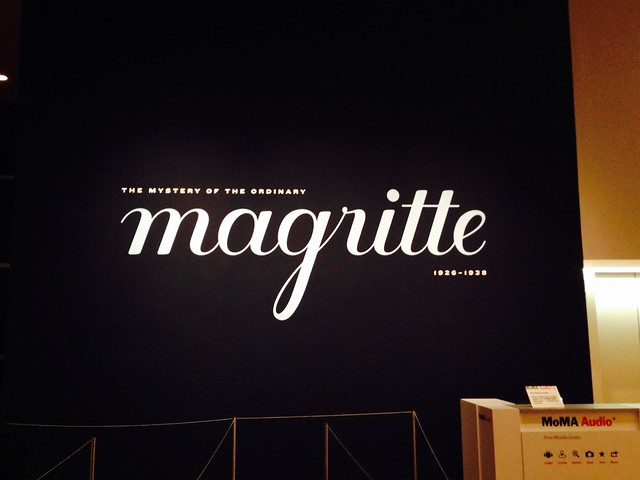
After our brief mingling with the other classroom diners, we were taken on a private, abbreviated tour of the Magritte exhibition led by curatorial assistant Danielle Johnson. It was really great to walk through the exhibit with a knowledgeable guide -- definitely shed some notable observations about a handful of the exhibit's works.

After the forty minute guided tour, we returned back to Café 2 where the next course was sitting ready to be observed and eaten.
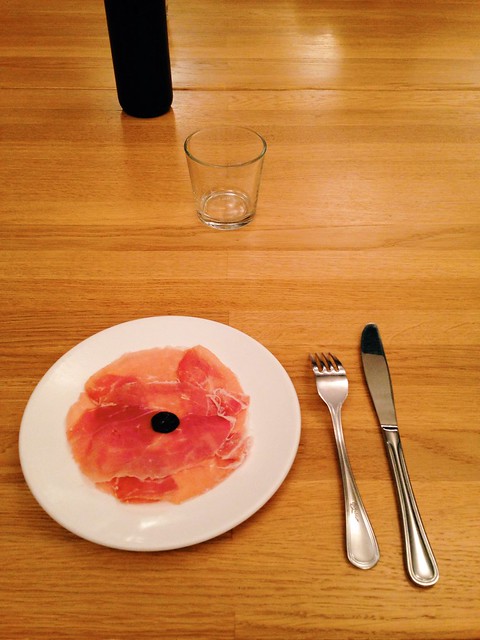
This course had thin slices of prosciutto di Parma with olives and wine, just like in the below Magritte painting, Le Portrait. The prosciutto was quite divine, as it was sliced as thin as you can imagine, and had little traces of fatty edges that really rounded out the savoriness of the Italian ham.
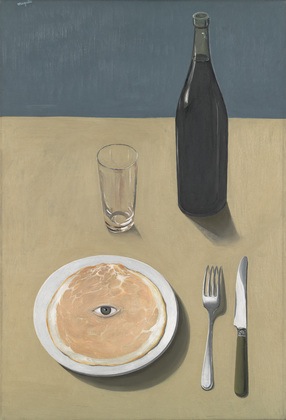
René Magritte
Le Portrait (The Portrait)
Brussels, 1935
Museum of Modern Art: New York, USA
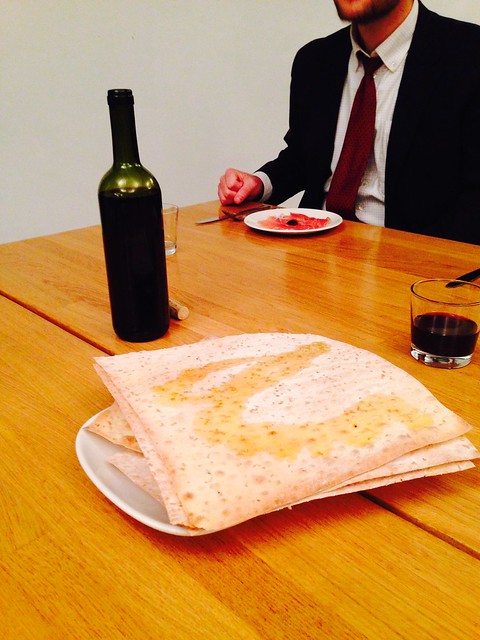
Served alongside the prosciutto were these really thin squares of bread drizzled with olive oil, which went really well with the slices.
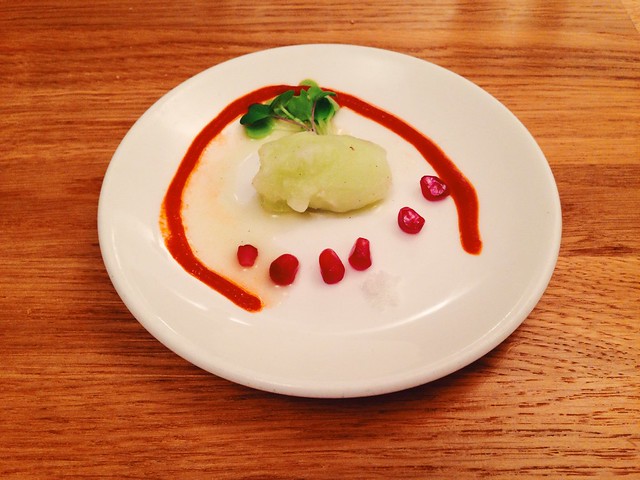
The next course was a great interpretation of Les Six Éléments as a deconstructed salad. The painting has six images (i.e., fire, a nude, a forest, a façade, the sky, and grelots/sleigh bells) in which they are juxtaposed in a two-by-three asymetrical grid to represent the basic elements of the universe: air, water, fire, and earth. The cucumber sorbet at the center represents the façade; the microgreens on top represent the forest/trees; the salt below represents the clouds; the pomegranate seeds represents the nude (unofficially known as god's fruit -- perhaps because it's full of seeds); the sriracha sauce encircling all the ingredients represents fire; and the last element of grelots, not pictured here, was more of an aural experience -- Ms. Tin Nyo rang a bag of bells while we began eating this second course. Just as the painting brings together "six" elements, this course brings together five unlikely ingredients (plus some bells) to create a cohesive deconstructed salad. Really refreshing with some tartness and a bit of heat from the sriracha.
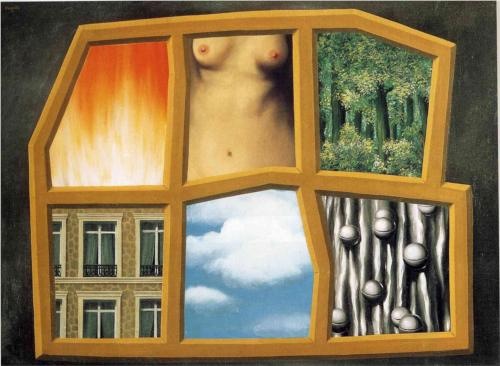
René Magritte
Les Six Éléments (The Six Elements)
Paris, 1929
Philadelphia Museum of Art: Philadelphia, USA
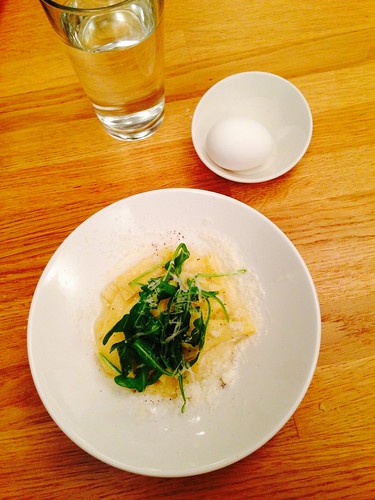
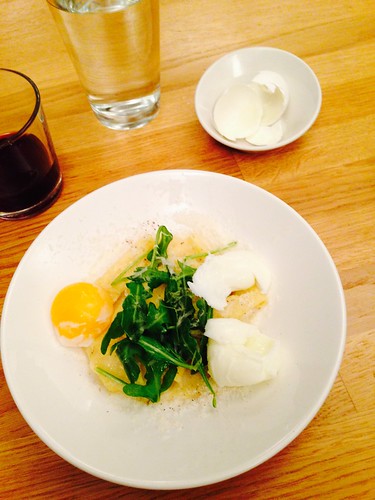
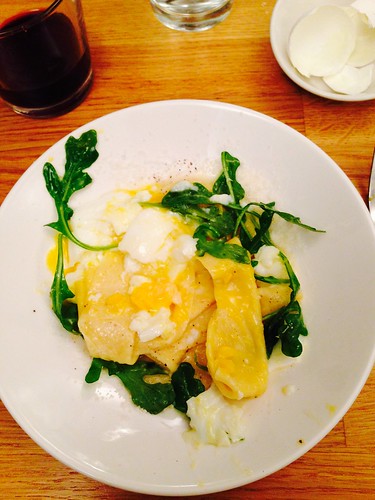
The main course was {1} pappardelle pasta with Asiago, arugula, and a soft-boiled egg. The interactive part of this course was that {2} we had to crack open the soft-boiled egg {3} so that the yolk becomes the sauce for the pasta. It was a fun tongue-in-cheek way to pay homage to the caged egg in the painting Les Affinités Électives. The ribbons of pasta were delicate and paired deliciously with the creamy sauce of the soft-boiled egg yolk -- very well done.
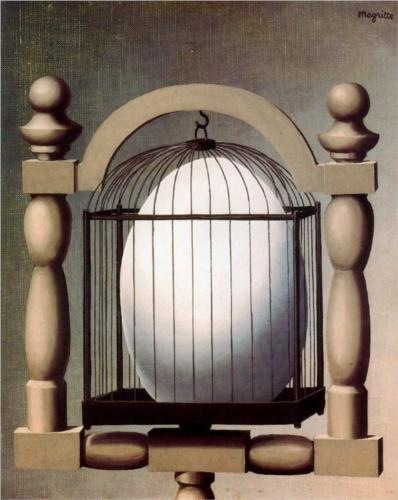
René Magritte
Les Affinités Électives (Elective Affinities)
Brussels, 1932
Private collection
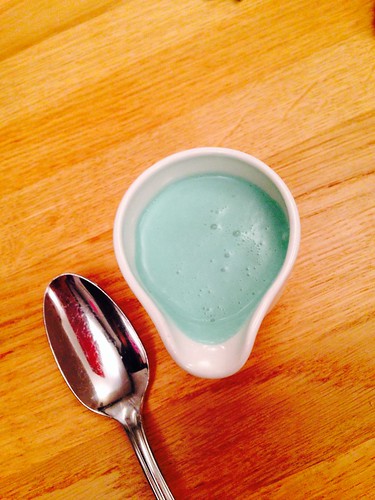
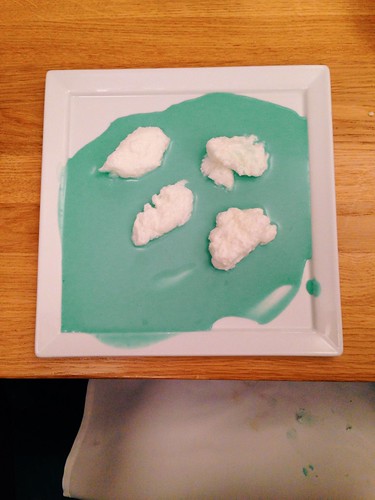
The following course began the first of two desserts. This one that let us "paint" our own vision of Magritte's Les Perfections Célestes, pouring a layer of aquamarine crème anglaise as the sky and arranging soft poached meringues as clouds however we like. Though the crème anglaise looked like something out of a miniature golf course, it was the perfect amount of sweet and creamy (food coloring can really play with your expectations of taste :P). The meringues were perfection (fittingly so, as the work's title is explicitly named), both delicate and pillowy.

René Magritte
Les Perfections Célestes (Celestial Perfections) [photograph by Jill Krementz of New York Social Diary]
Paris, 1930
Brachot Gallery: Brussels, Belgium
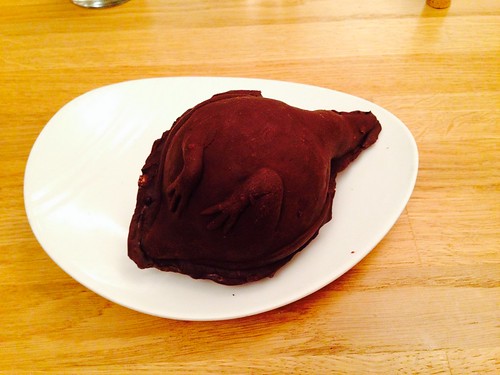
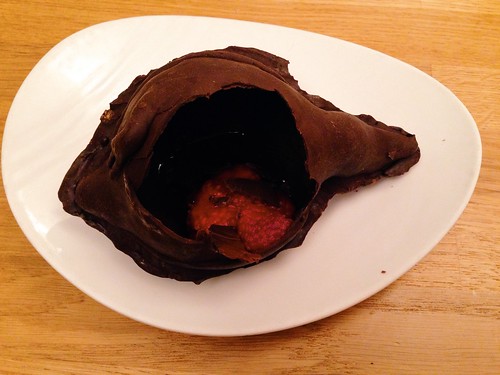
The last course was pretty much a showstopper. Emulating the painting, Jeune Fille mangeant un oiseau (Girl Eating a Bird), this dessert consisted of a dark chocolate sparrow filled with a sweet rum-raspberry sauce, we each had to take the bird into our hands and bite right into it as the young girl does in Magritte's painting. The biting into the dark chocolate sparrow shell is supposed to echo the sound of bones breaking. This course definitely had a chilling effect on me -- just as Magritte's painting had when I first saw it on view at the exhibition.
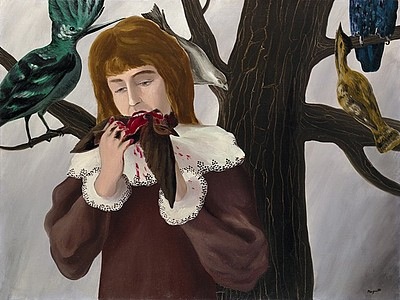
René Magritte
Jeune Fille mangeant un oiseau [Le Plaisir] (Girl Eating a Bird [Pleasure])
Brussels, 1927
Kunstsammlung Nordrhein-Westfalen: Düsseldorf, Germany
Findings: The Edible Magritte class was incredibly enlightening on the profound works created by surrealist René Magritte. It especially made a lasting impression for me as it combined two of my passions and preferred expressive mediums -- Modern art and the culinary arts -- in a way that I could fully understand and further enrich my appreciation of the mysterious works of Magritte. The collaboration between artist Elaine Tin Nyo and chef Lynn Bound was undoubtedly seamless, as they truly and entirely captured the literal and figurative elements of Magritte's intentions in six distinct works in addition to the wealth of knowledge shared to us by curatorial assistant Danielle Johnson. Given the amazing execution of this "art" dinner, I'll definitely be keeping my eyes open for future dinners like this at the Museum of Modern Art that are created parallel to current exhibitions.
Price point: $150 per person ($100 per museum member) for six-course, artist-inspired dinner.
--November 14, 2013
"Edible Magritte" (La cuisine de Magritte)
Museum of Modern Art
11 West 53rd Street
New York, NY 10019
http://www.moma.org/learn/courses/courses
http://press.moma.org/wp-content/files_mf/5_magrittechecklist.pdf


